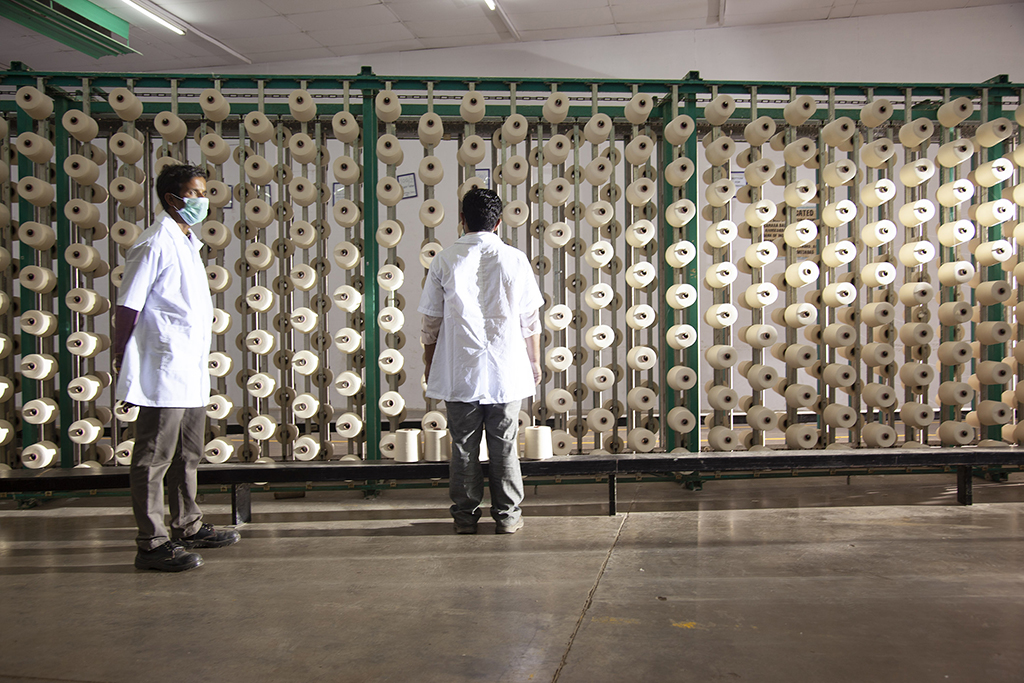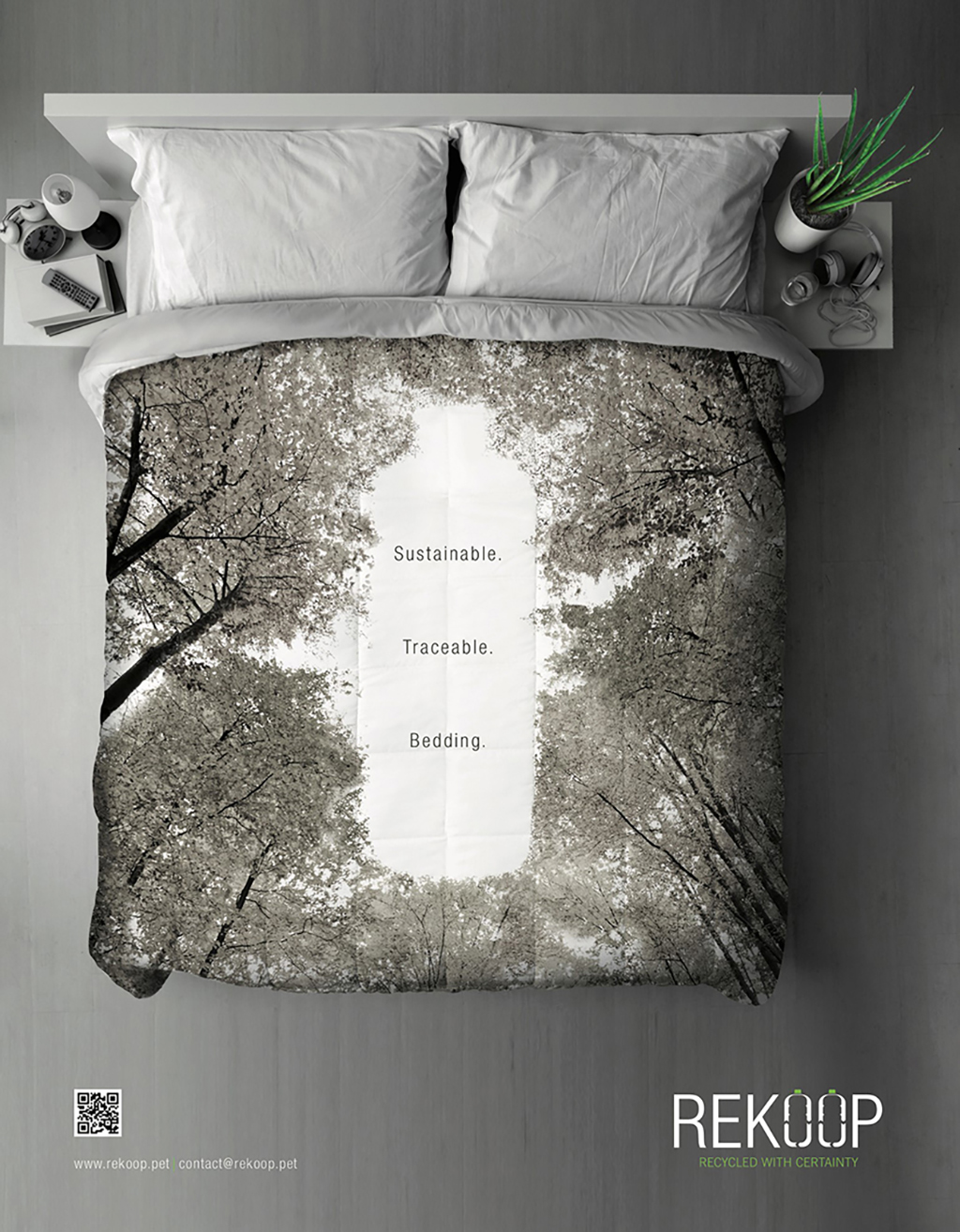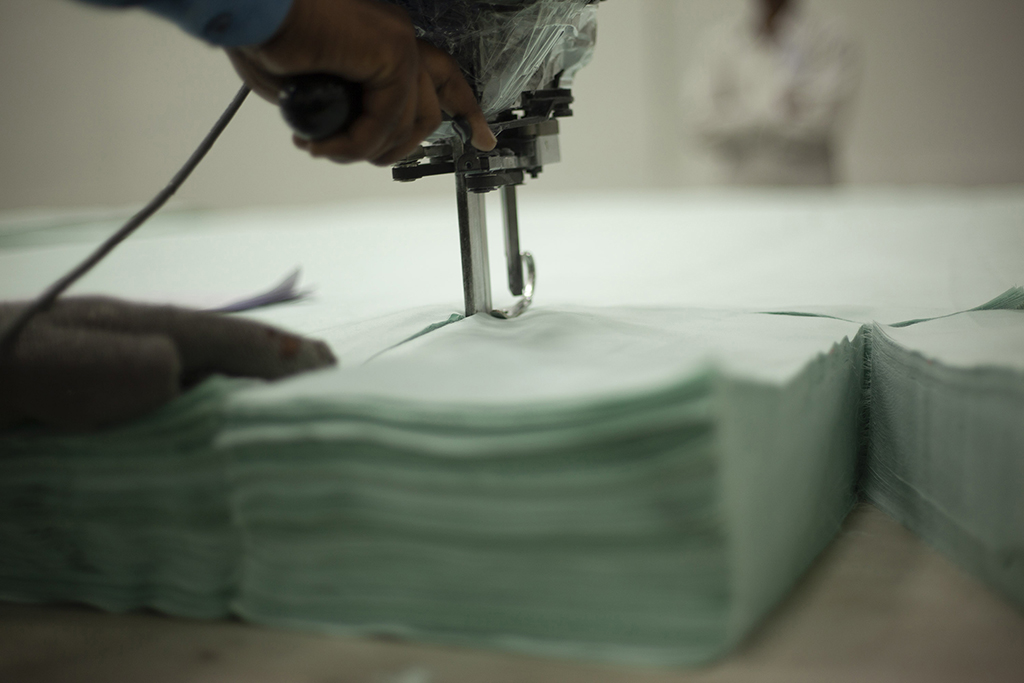The company recently announced the demerger of its textile business which will lead to operational advantages. In addition, a separate management will have a more focused approach, create better strategic partnerships, improve efficiencies and business synergies, and increase operational and customer focus

GHCL is a name that needs no introduction to the Indian textile fraternity. While the company has established presence in chemicals and consumer product sectors too, it has carved a distinct niche for itself in textiles. The company was in the news recently, announcing the demerger of its textile business. We spoke to Managing Director R S Jalan and found out more about the demerger, the manufacturing capacity of the company, its focus on the home textiles segment, automation in its manufacturing units and the company’s long-term vision.
Elaborating about the demerger and what it entails, Jalan said chemicals and textiles are two very distinct businesses and a demerger will bring forth many operational and strategic advantages to each business segment. “This will include a concentrated approach, business synergies, increased operational and customer-centricity as well as focused growth opportunities. Moreover, it will help us address independent business prospects with efficient capital allocation. It will also help us attract and manage different sets of investors, strategic partners and other stakeholders. With so many advantages, we believe that a demerger will result in enhanced value creation for all our stakeholders,” he added. The new entity is registered as GHCL Textiles Limited.
After approval from shareholders and unsecured and secured creditors, the company has now approached National Company Law Tribunal (NCLT) and the demerger will be effective once it has their approval. According to Jalan, there will be something conclusive by the end of this calendar year. Going into details about how the demerger will benefit GHCL’s textile business, Jalan stated, “As I said earlier, a demerger will provide the textile business with many operational advantages. In addition, a separate management will have a more focused approach, create better strategic partnerships, improve efficiencies and business synergies, and increase operational and customer focus.”
Strong Performance
Sharing a quick glimpse of GHCL’s textile business performance in the year 2020-21 and Q1 of FY22, Jalan pointed out that the during the first quarter of FY21 the textile industry was severely impacted due to the nationwide lockdown. There was huge demand contraction in the first two months. “However, we were able to bounce back strongly in Q2 due to pent-up demand in our key export markets i.e. the US and Europe. By the end of the third quarter, we witnessed a V-shaped recovery on strong order inflow from the US and rest of the world. We were operating close to full capacity; demand was robust due to continuation of work from home and new stimulus in the US,” he said.
“In the fourth quarter too, the textile business continued to perform well, operating at high utilisation levels. Our orders remained strong. The spinning business performed well due to strong domestic demand and high prices of yarn. With our focus on value-added products and cost optimisation we achieved better realisations,” he added. Jalan opined that the same trend has continued into the first quarter of this fiscal too and that the home textile industry has continued to see strong demand from various markets, including the US. To add to this, ROSTL benefits have been extended until March 2024, which will definitely help the industry to be more competitive.

Further, Europe may withdraw the special status to Pakistan, which will make the Indian textile industry more competitive. He added that the world’s China Plus One strategy and support from the government will ensure almost 18-20% margin for the industry going forward. “In the spinning business, yarn demand continues to be strong mainly from the domestic home textile industry and from low and medium value garments. Pricing uptrend in cotton and yarn is still strong due to this increased demand. Since the last three years we have been moving from a commodity space to the value-added segment space and that journey is now yielding results. Going forward, we believe that margins will be good in the textile business in FY22,” Jalan said.
“With our focus on value-added products and better realisations, we anticipate buoyancy in the textile business to continue as business prospects in the near future look good,” he observed. Robust infrastructure has always been a strong point of GHCL across its manufacturing units in Madurai and Vapi that are engaged in spinning, weaving and home textiles. “Our home textiles’ plant in Vapi, Gujarat has an annual production capacity of 45 million metres of finished fabric per annum. The existing capacity of the weaving process is 12 million metres per annum and processing is 45 million metres per annum, which is then converted into products like duvet and sheet sets,” Jalan informed.
“We have the best equipment like Tsudakoma, Picanol, Benninger, Kuster and Monforts. We have the flexibility to process both cotton and blended fabric and our products are exported worldwide,” he added. The company’s spinning units are located at Paravai in Madurai and Manaparai in Trichy, Tamil Nadu. The company produces 30,000 metric tonnes of yarn annually. The plant spins multiple varieties of yarn such as:

• 30s to 140s in ring spun compact counts in 100% cotton, both single and folded yarn
• 16s to 20s in open end 100% cotton
• 20s to 100s in ring spun synthetic and synthetic blended yarns
• 20s to 40s in air jet spinning.
Going forward, GHCL plans to invest close to Rs 200 crore to enhance the production capacity at its spinning units. This includes investments to enhance its existing green energy portfolio in accordance with its vision for sustainable and responsible business growth. Post demerger, is the company planning any investment or expansion plans in spinning, home textiles or any other new segment? Replying to this question, Jalan said, “In the textiles business our growth strategy is around the expansion of our spinning business and green energy with focus on customer-centricity, value-added products, cost optimisation and assets utilisation.”
“About 20% of our spinning capacity will go up next year and you will see good growth in the textile segment in terms of the volume. In spinning, we want to be competitive and have a basket of products of various spinning sizes. Any spinning product you think of, any yarn if you think of, we should be able to produce. Moving into such a diverse product basket and value-added product basket would definitely bring good returns and more efficient capacity utilisation,” he further said.
Exceeding Expectations
In home textiles, GHCL has introduced a range of sustainable products in the last couple of years. Also, considering the intense competition globally in this segment, GHCL plans to increase its presence and ensure product differentiation. “The latest launches from GHCL’s home textiles division continue to build on our four-pillar strategy of sustainability, traceability, innovation and excellence. The fourth pillar of excellence, which we added this season, is all about exceeding expectations. We continue to innovate and bring our latest collections and innovations to the market based on these four strong pillars. Our mission for sustainable products has reached new heights with our ‘Earthology’ collection – Eco Cotton, Eco Corn Cotton and Eden Dyes. This new sustainable range offers exciting new concepts of decomposable CVC fabrics – vegetable dyes and products made from renewable resources,” Jalan informed.
“Traceability being a strong pillar of value at GHCL, it has led us to develop and proudly present ‘True Trace’ which is a platform based on QR code technology that has been fully implemented and audited by third-party accreditations. The True Trace platform offers a holistic B2B and B2C level of confidence for special cottons such as Egyptian cotton and other such cottons being bought, spun, woven, processed and made into bed linen at GHCL. We are proud to launch our fashion bedding and top-of-the-bed line in this market. You would find us differentiated in a way that our TOB collections run very much in sync with our sheet world themes and fabric substrates and allow us to offer the same innovation levels even in our fashion bedding products. Our TOB ranges are scalable and sellable with core sheet lines to coordinate for the end customer,” he stated.
Automation and Digitisation
Textile mills are now increasingly focussing on automation and digitisation to improve overall efficiency and productivity. GHCL too is focussing on these critical aspects of manufacturing. According to Jalan, automation and digitalisation of processes is a top priority for GHCL. He pointed out that textile machinery manufacturers too are committed to incorporating Industry 4.0 guidelines and have started implementing automation on a large scale. GHCL is committed to adopt key insights, best practices and prepare better for unprecedented times. Both automation and digitalisation is being implemented through proper process planning, modelling and strategic deployment of intelligent automation solutions wherever possible.

“Digitisation of various business functions at GHCL, including production processes, purchase, HR module GEMS, accounts and finance, and marketing and customer serviceability are well set and have led to significant improvement in productivity, efficiency and resource utilisation. Some of the automation and digitisation implemented in the production processes provides valuable real-time data and helps to ensure consistent output material quality. Adoption of online monitoring and digitisation of machinery maintenance helps to connect our shop floor technicians with a machine manufacturer’s service team, resulting in better planning of maintenance activities and leads the way forward to start implementing TPM across all our manufacturing units,” he stated. The company has a solid long-term vision for its textile business, speaking about which Jalan said: “Our vision for GHCL is to grow our business responsibly with governance, sustainability and core values as our foundation. Our aim is to innovate and centre our collections on sustainability and traceability, ensuring excellence in all we do. The first pillar, sustainability aims at creating credible and affordable alternatives. Traceability reiterates that knowledge is power and our soil-to-shop tracking empowers informed choices. We believe that every innovation is a new beginning for us so that we may move with the times and improve on what we have delivered. The fourth pillar of excellence is all about exceeding expectations. We also focus on the health and safety of our employees. To adapt and to make our processes more competitive we are working on improved digitisation and adoption of IoT and artificial intelligence too.”